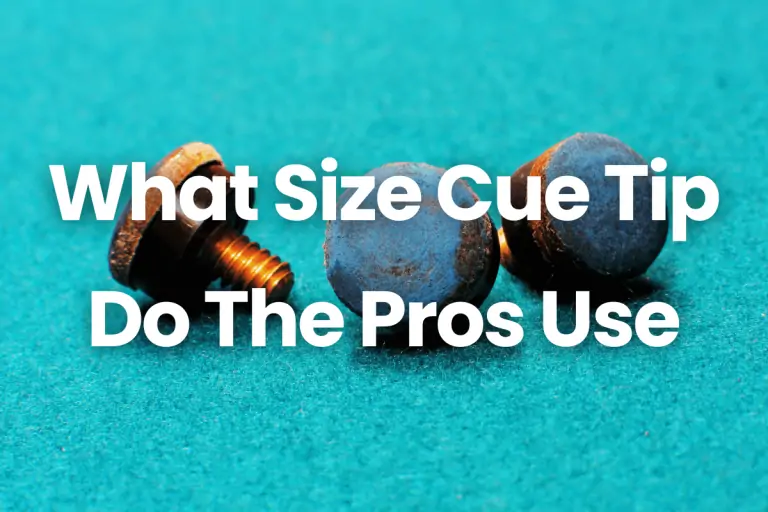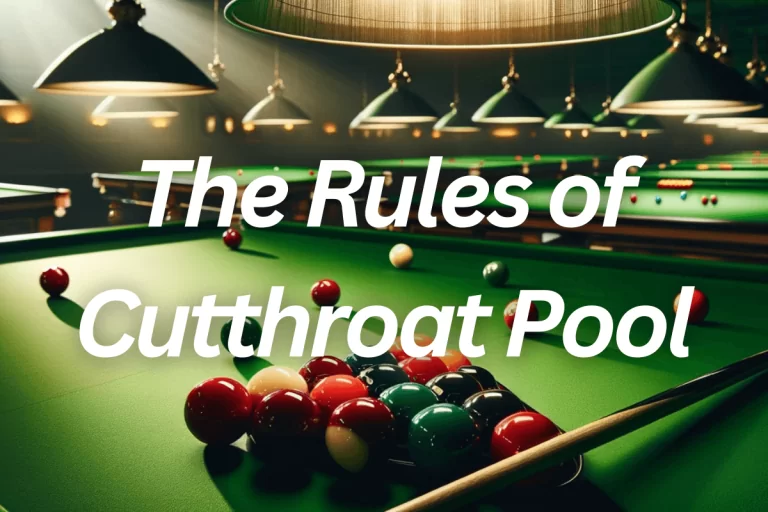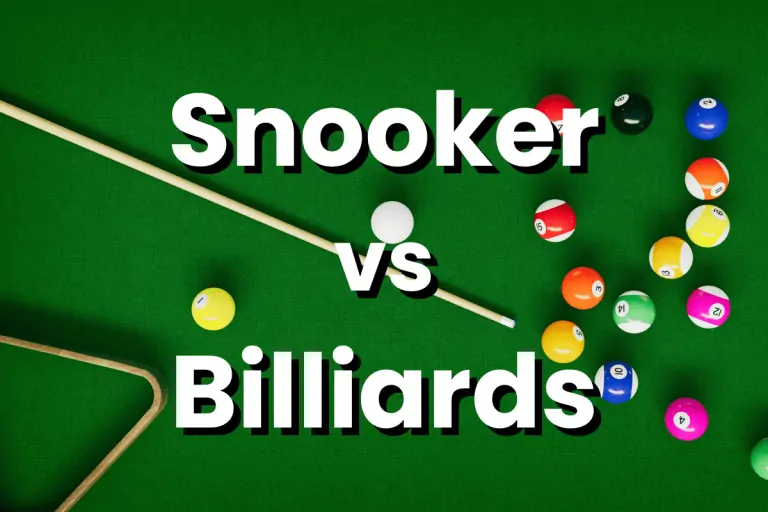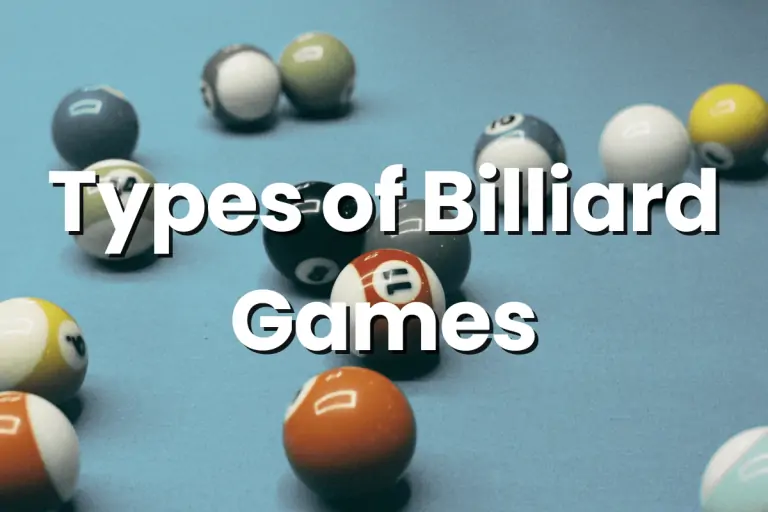How to Win 9-Ball in One Shot | Unlock the Secret
9-Ball Pool, renowned for its dynamic and challenging gameplay, enthralls players with its unique blend of precision and strategy. Central to this game’s excitement is the break shot, a pivotal moment that can determine the outcome of a match. Mastering the art of “how to win 9-Ball in one shot” is not just a testament to skill but a decisive advantage in any game. This guide delves into refining that critical break shot, offering you the key to unlock potential game-winning moments.
Essentials of a Solid 9-Ball Rack
Achieving a powerful and effective break in 9-Ball Pool starts with a properly racked set of balls. Here’s a step-by-step guide to ensure a tight 9-Ball rack, essential for maximizing the potential of winning in one shot:
Start with the Right Formation: Arrange the nine balls in a diamond shape. This setup is fundamental for a successful break in 9-Ball.
Position the 1-Ball: Place the 1-ball at the apex of the diamond, positioned at the foot spot on the pool table. This placement is crucial for a consistent and effective break.
Secure the 9-Ball: The 9-ball goes in the center of the diamond. Ensuring its correct placement can influence the break’s outcome, increasing the chances of pocketing it in one shot.
Ensure Tight Packing: Every ball must be in direct contact with its neighbors. This tight packing ensures that the energy from the break is efficiently transferred through the balls, increasing the likelihood of a powerful break.
Double-Check the Rack: Before executing your break, double-check the rack for any gaps or loose balls. Even the slightest space can diminish the effectiveness of your break, impacting your strategy to win in one shot.
How to Win 9-Ball in One Shot: 4 Techniques
Technique 1: The Side Break with a Square Hit
One of the most effective techniques in 9-Ball Pool, especially among professional players, is the side break with a square hit. This method is renowned for its potential to yield powerful breaks and even achieve the coveted ‘golden break’. Here’s how to master it:
Detailed Explanation of the Side Break Technique
Positioning the Cue Ball: Start by placing the cue ball just behind the head string line, about a ball’s width away from the side rail. This position allows for a better angle of attack on the 1-ball.
Aiming for a Square Hit: The goal is to hit the 1-ball squarely. This means aligning the cue ball in such a way that it strikes the 1-ball directly at its center. A square hit maximizes the transfer of energy to the rack, essential for a powerful break.
Advantages of the Side Break with a Square Hit
Increased Chances of a Golden Break: This technique offers a higher probability of pocketing the 9-ball directly from the break, known as a ‘golden break’.
Better Ball Spread: A square hit from the side tends to disperse the balls more evenly across the table, increasing the likelihood of pocketing balls and setting up for subsequent shots.
Control Over the Cue Ball: Proper execution of this break type allows for better control over the cue ball’s post-break position, crucial for the next shot if the golden break isn’t achieved.
Technique 2: Pocketing the 1-Ball on the Break
Another effective technique in 9-Ball Pool is specifically targeting the 1-ball on the break, a method that can potentially pocket the side ball as well. This approach requires precision and practice to master. Here’s how to set it up and execute it successfully:
Setting Up for the 1-Ball Break
Positioning the Cue Ball: Place the cue ball just behind the head string line, similar to the side break position. However, this time, align it slightly off-center towards the side of the table where you intend to pocket the 1-ball.
Aiming the Cue Ball: Focus your aim on the side of the 1-ball opposite to the pocket you’re targeting. This angle is crucial for directing the 1-ball towards the desired pocket.
Executing the Break
The Stroke: Use a controlled, yet powerful stroke. The goal is to impart enough force to send the 1-ball toward the opposite pocket, but with enough control to keep the cue ball on the table.
The Contact Point: Striking the 1-ball on its side rather than squarely is key. This side contact increases the chances of the 1-ball heading towards the opposite pocket.
Pocketing the Side Ball Simultaneously
Understanding Ball Dynamics: When executed correctly, this break can also send a side ball towards another pocket, often the one on the same side you’re breaking from. This is due to the spread of the balls from the impact.
Strategic Positioning for Subsequent Shots
Controlling the Cue Ball: After the break, it’s important to have the cue ball in a favorable position for your next shot, assuming the 1-ball or side ball is pocketed. Aim for the cue ball to stay near the center of the table to maximize your options.
Planning Ahead: Think about the possible positions of the balls post-break. This foresight will help you prepare for your next moves, making the game not just about luck but also about strategy and skill.
Technique 3: Implementing a Slight Top Spin
Applying a slight top spin to the cue ball during the break in 9-Ball Pool can significantly enhance your control over the game. This technique involves striking the cue ball in a specific manner to influence its post-break behavior. Here’s how to do it and understand its benefits:
Applying Top Spin to the Cue Ball
Positioning the Cue Ball: Start by placing the cue ball behind the headstring line. The exact positioning can vary based on personal preference, but generally, a central or slightly off-center position works well.
Striking for Top Spin: To impart top spin, you need to hit the cue ball slightly above its center. Adjust your cue stick so that the tip is aiming just above the midpoint of the cue ball.
Executing the Shot: When you strike the cue ball, do so with a smooth, upward stroke. The key is to follow through with your cue, ensuring that the tip moves upwards upon contact with the ball. This motion imparts the top spin.
Benefits of Top Spin During the Break
Controlled Spread of Balls: Top spin can help in controlling the spread of the balls upon impact. It makes the cue ball roll forward after hitting the rack, potentially avoiding unwanted collisions with other balls.
Positioning for the Next Shot: One of the biggest advantages of this technique is the control it offers over the cue ball’s position post-break. Ideally, the cue ball ends up in the center of the table, providing a wide range of options for your next shot.
Reduced Risk of Scratching: Properly executed top spin reduces the risk of the cue ball being pocketed (scratched) on the break, a common issue with powerful, uncontrolled breaks.
Technique 4: Mastering the Soft Break
The soft break is a nuanced technique in 9-Ball Pool, particularly beneficial for beginners or those who prefer a more controlled game. Unlike the hard, explosive breaks often seen in professional play, the soft break focuses on finesse and strategic ball placement.
The Soft Break Method
Cue Ball Positioning: Place the cue ball behind the head string, similar to other break techniques. The exact position can be slightly off-center, depending on where you feel most comfortable and effective.
Executing the Soft Break: The idea here is to strike the 1-ball gently but firmly. Instead of a powerful thrust, use a controlled, moderate stroke. The goal is to disperse the balls without sending them crashing around the table.
Gauging the Power: Finding the right balance between too soft and too firm is important. The break should be strong enough to spread the balls, but not so powerful that it becomes difficult to control the subsequent play.
Benefits and Execution of the Soft Break
Pocketing the Wing Ball: One of the key objectives of a soft break is to pocket the wing ball (the ball at the edge of the rack). A softer break can make this more predictable, as the reduced speed allows for more control over the ball’s trajectory.
Positioning the 1-Ball: With a soft break, you can also aim to leave the 1-ball near the center of the table, setting up a favorable next shot. This is achieved by the reduced speed of the break, which lessens the 1-ball’s momentum.
Reduced Risk of Fouls: The soft break minimizes the chances of committing fouls like scratching (pocketing the cue ball) or knocking balls off the table.
Advanced Break Strategies
For seasoned 9-Ball Pool players, developing advanced break strategies is crucial for gaining an upper hand in competitive play. This involves not just mastering different break techniques but also understanding when and how to use them based on the specific game scenario and your opponent’s style.
Diving into Strategic Nuances
Reading the Rack: Experienced players often develop the ability to read subtle variations in the rack. Identifying slight gaps or irregularities can influence your choice of break shot, optimizing the chance of pocketing a ball or setting up a favorable table layout.
Adapting to Table Conditions: Be aware of how the table is playing. Factors like cloth speed, rail bounce, and pocket size can affect how the balls react on the break. Adjust your power and aim accordingly to maximize efficiency.
Using Different Speeds: Don’t stick to just one speed for all breaks. Varying the break speed based on the rack setup and desired outcome (like a more spread-out table versus a more clustered one) can be a strategic advantage.
Analyzing Scenarios and Adjusting Techniques
Opponent’s Playing Style: If your opponent excels in a tactical, slow-paced game, a powerful break leading to a wide-open table might be advantageous. Conversely, against a strong shot-maker, a controlled break that limits easy starting shots might be better.
Positional Play Post-Break: Consider where the cue ball and other key balls (like the 1-ball and the 9-ball) are likely to end up post-break. Experienced players plan their breaks not just to pocket a ball but also to set up their next shots, or to leave a challenging table for the opponent in case they don’t pocket a ball.
Mental Aspect: Sometimes, the choice of break can be used to send a psychological message to your opponent. An aggressive, powerful break might be used to assert dominance early in the match, while a more nuanced, controlled break could be employed to show precision and control.
Choosing the Right Equipment
Selecting the right equipment is crucial in 9-Ball Pool, especially when enhancing your breaking power and control. The right cue, along with other gear, can make a significant difference in your game. Here are some recommendations to help you choose the best equipment for your break shots.
Pool Cues for Optimal Breaking
Cue Weight and Balance: A heavier cue can provide more breaking power, but it’s essential to find a weight that you’re comfortable with. Balance is also key; a well-balanced cue delivers a controlled and powerful break.
Cue Tip Size and Hardness: A larger, harder tip is generally preferred for break shots as it transfers more energy to the cue ball. However, the tip should not be too hard, as it may reduce control and feel.
Cue Shaft: Look for a sturdy shaft that can withstand the impact of a powerful break. Some players prefer a stiffer shaft for breaking as it offers more power and consistency.
Pool Balls
Quality of Balls: High-quality, well-balanced balls can significantly impact the break’s effectiveness. Balls that are chipped or unevenly weighted can react unpredictably during a break.
Pool Table Cloth
Cloth Type: The type of cloth on the pool table can affect the game. A smoother, faster cloth can help in spreading the balls more efficiently on the break.
Conclusion
In summary, mastering the 9-Ball break to win in one shot involves key techniques like the side break with a square hit, targeting the 1-ball, applying topspin, and mastering the soft break. Each strategy requires diligent practice and adaptation to various game scenarios. Ultimately, the art of a successful 9-Ball break lies in a harmonious blend of skill, strategic thinking, and consistent practice. Embrace these techniques, refine them in practice, and watch as your ability to dominate the break transforms your 9-Ball game.
FAQS
Can you really win 9-Ball Pool in one shot?
Yes, it’s possible to win 9-Ball Pool in one shot, known as a ‘golden break,’ by pocketing the 9-ball on the break shot. This requires precise technique and a bit of luck.
What is the best technique for a powerful 9-Ball break?
Many players find the side break with a square hit to be highly effective. It involves striking the 1-ball squarely from the side, providing a balance of power and control.
Is top spin or back spin better for breaking in 9-Ball?
Top spin is often recommended for 9-Ball breaks. It helps control the cue ball after the break, setting up for subsequent shots and reducing the risk of scratching.
How important is the cue weight for a 9-Ball break?
Cue weight plays a significant role in breaking. A heavier cue can provide more power, but it should still feel comfortable and balanced for the player.
Can beginners effectively perform a 9-Ball break to win in one shot?
While challenging, beginners can achieve a 9-Ball break to win in one shot with practice. Starting with the soft break technique is often beneficial for beginners to develop control and consistency.







